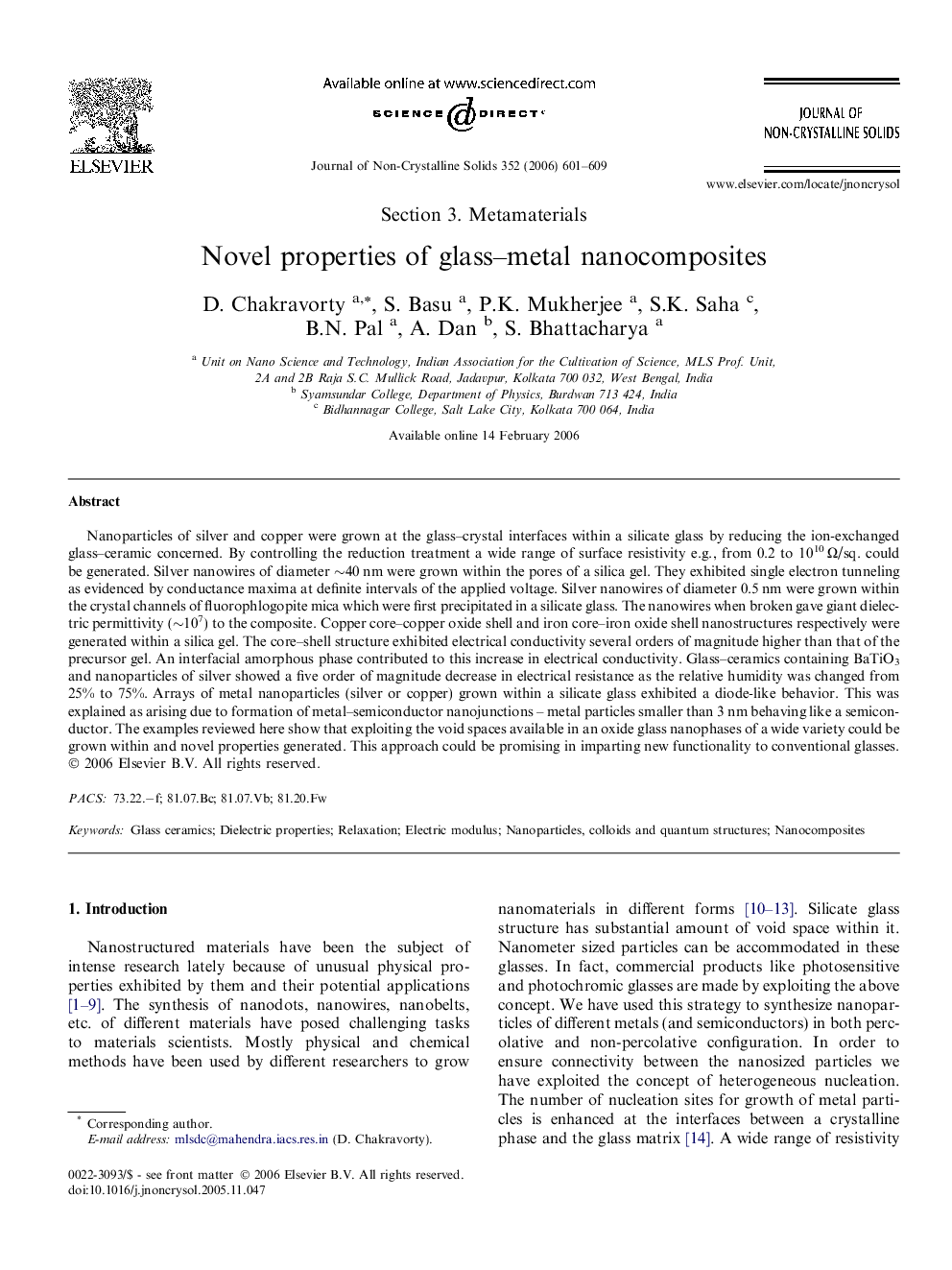| Article ID | Journal | Published Year | Pages | File Type |
|---|---|---|---|---|
| 1486506 | Journal of Non-Crystalline Solids | 2006 | 9 Pages |
Nanoparticles of silver and copper were grown at the glass–crystal interfaces within a silicate glass by reducing the ion-exchanged glass–ceramic concerned. By controlling the reduction treatment a wide range of surface resistivity e.g., from 0.2 to 1010 Ω/sq. could be generated. Silver nanowires of diameter ∼40 nm were grown within the pores of a silica gel. They exhibited single electron tunneling as evidenced by conductance maxima at definite intervals of the applied voltage. Silver nanowires of diameter 0.5 nm were grown within the crystal channels of fluorophlogopite mica which were first precipitated in a silicate glass. The nanowires when broken gave giant dielectric permittivity (∼107) to the composite. Copper core–copper oxide shell and iron core–iron oxide shell nanostructures respectively were generated within a silica gel. The core–shell structure exhibited electrical conductivity several orders of magnitude higher than that of the precursor gel. An interfacial amorphous phase contributed to this increase in electrical conductivity. Glass–ceramics containing BaTiO3 and nanoparticles of silver showed a five order of magnitude decrease in electrical resistance as the relative humidity was changed from 25% to 75%. Arrays of metal nanoparticles (silver or copper) grown within a silicate glass exhibited a diode-like behavior. This was explained as arising due to formation of metal–semiconductor nanojunctions – metal particles smaller than 3 nm behaving like a semiconductor. The examples reviewed here show that exploiting the void spaces available in an oxide glass nanophases of a wide variety could be grown within and novel properties generated. This approach could be promising in imparting new functionality to conventional glasses.
